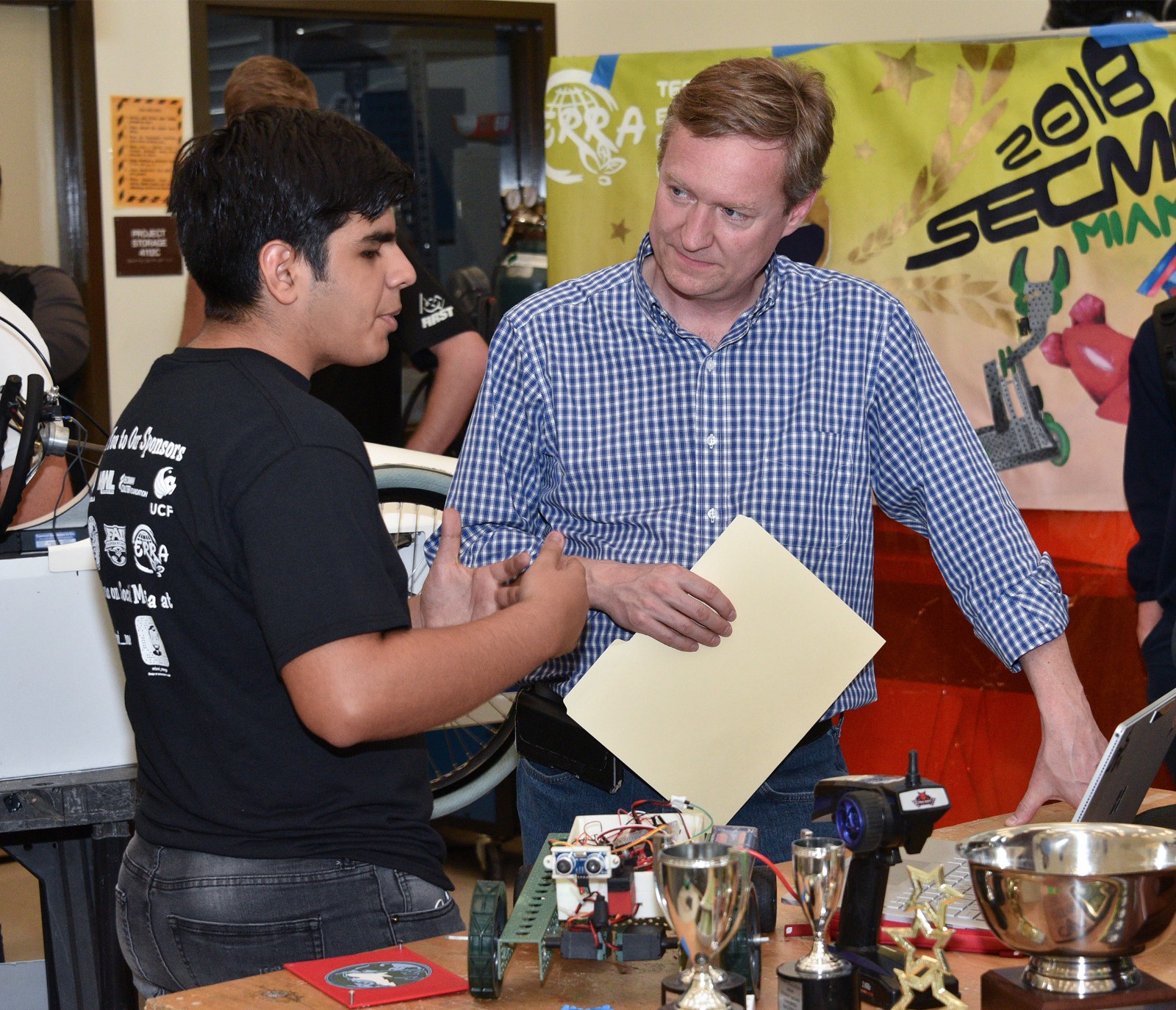More Than Just Miles: Our Self-Driving Vehicle Testing Helps Steer Miami Students Toward a Future of Robotics
By Peter Rander, President, Argo AI

After a year spent testing self-driving vehicles in Pittsburgh and Southeast Michigan — not to mention enduring some cold winter weather — the Argo AI fleet is enjoying a dramatic change of scenery. Among palm trees and ocean views, we’ve expanded our testing with Ford Motor Company into Miami-Dade County, with our self-driving vehicles now mapping roads and accumulating valuable test miles on the streets of Miami and Miami Beach. As we further increase our areas of testing throughout the year, we will continue to add vehicles to our autonomous vehicle fleet.
We look forward to working with the local government supporting our efforts, including Miami-Dade Mayor Carlos Giménez, who has been a staunch advocate of innovative ideas and self-driving technology. At the same time, we thought it was important to share our news more directly with other parts of the community in South Florida. And who better to engage with than a group that shares our passion for robotics?
That’s why we spent an afternoon with a group involved in FIRST Robotics — students, their mentors and teachers. We’ve been supportive of FIRST Robotics in Pittsburgh, and through our partnership with Ford and its involvement with the program, we’ve connected with multiple school teams to reveal that our latest robots — our self-driving vehicles — are now being tested in and around their own neighborhoods.

While it was great sharing our news with members of the media, the most thrilled reactions came from these students. It’s a testament to how excited they are about this technology that when a test vehicle arrived at the scene promising a spontaneous pizza party, they didn’t even budge — all these students wanted to talk about was how the car’s various sensors worked and how deliveries could be handled in the future.
After that, it was my turn to be impressed by their amazing accomplishments. One of the coolest things I saw from these students was a demo of a robot that quickly picked up and stacked small traffic cones. As you watch a robot move and try to perform its intended function, what really hits you is just how many questions these students first had to ask themselves and solve for. There’s no cookie-cutter solution to picking up and stacking anything, so you gain a true appreciation for the fact that they clearly had to entertain numerous options before determining what their approach to building a robot that could efficiently pick up and stack cones would be.
Upon hearing that we would be visiting, some of these students even developed their own self-driving car. Within a few days, they had inserted a Raspberry Pi circuit board into a remote control car to program it, then added a couple of ultrasonic sensors to enable the test car to detect obstacles in its path. After some testing and tuning, they had developed a self-driving car that would stop when it found something in its path and then steer out of the way of the obstacle.
I was pleasantly surprised to see how excited these students, their teachers, coaches and mentors actually were about robotics, and my time with them was truly heartening. Back when I was in high school, I barely even knew what a robot was except that it was science fiction — a cool, futuristic idea that hinted at a fascinating future. Nowadays, students are putting together makeshift robots in a couple of days and diving headfirst into the field to solve interesting challenges on their own.
That’s a far cry from even 10 years ago, when it was impressive just to see a robot follow a line painted on the floor. Seeing how passionate these young men and women are reminds me that part of our mission at Argo AI is to inspire others — whether they’re students in robotics or interested members of the communities in which we operate — to learn more about how automation can improve their lives. That these students managed to put together their own driver-less car is motivating, even to those in the field like me.
Similarly, I can only hope that seeing Argo AI’s test vehicles now driving themselves on local streets will serve as an inspiration for students in Florida wondering what they have to offer the world.
Special thanks to Sandra Contreras, regional director of FIRST in South Florida, for helping coordinate our visit with the student teams. And thanks to Hector Escobedo, engineering teacher and FIRST mentor, and to the staff at TERRA Environmental Research Institute for hosting the visit at their amazing high school.
And of course, best of luck to all the student teams that joined us that day: RamTech 59 from Miami Coral Park Senior High School, Team LIFE from Terra Environmental Research Institute and The Ninjineers from American Heritage School.
